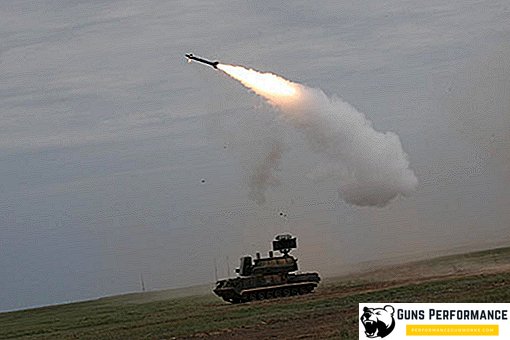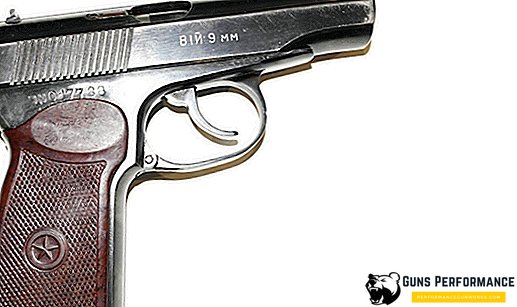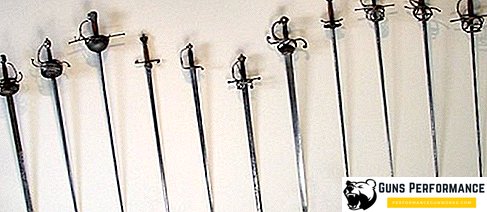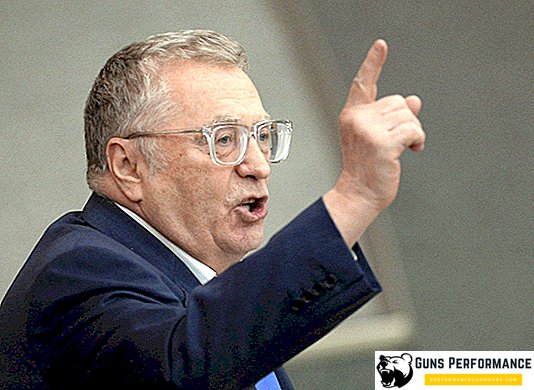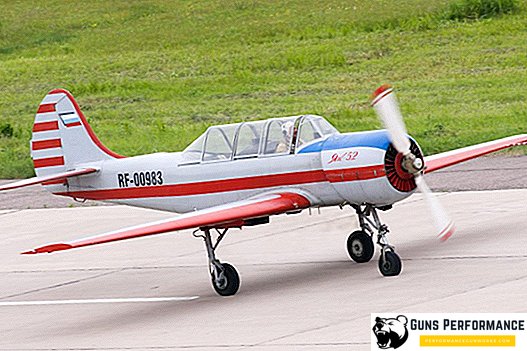
The Yak-52 is a Soviet piston sports training aircraft developed by the Yakovlev Design Bureau in the late 1970s based on the Yak-50 single-seat aerobatic plane. Led the design team V. P. Kondratiev. The Yak-52 became one of the main aircraft of this type in the Soviet Union, and pilots continue to train there today.
His first flight of the Yak-52 made in 1979, at the same time began its mass production. Aircraft production continued until 1998, the Yak-52 and is now in operation. Its production was established at the factory of Aerostar (Romania). Since its first flight, this aircraft is a frequenter of various aviation shows - the aerobatics on the Yak-52 is really fascinating.
During serial production, several modifications of the aircraft were developed. At its base, they even created a light assault attack aircraft, which they planned to use in Afghanistan, but never launched into a series. In total, more than 1,800 units of the Yak-52 were produced.

The main operators of this beautiful machine were (and are) flying clubs DOSAAF. Today there are more than 330 Yak-52 airplanes in Russia, about 100 of them are in good condition and are being actively exploited. Use the Yak-52 and outside of our country, mainly in the former Soviet republics. In Russia, this aircraft is planned to be gradually replaced by a more modern Yak-152. The replacement program should start this year.
History of creation
In the early 1970s, a program was launched in the Soviet Union to update the fleet of training aircraft for DOSAAF flying clubs. It was planned to equip them with new single-sport aerobatic machines and two-seat training aircraft. To reduce the cost of this program, it was decided to create two very similar aircraft, with a maximum level of unification and the same power plant.
In the early 70s, the Yak-50 sport aerobatic pilot was built at the Yakovlev Design Bureau, and at its base, the designers began to create the Yak-52 training aircraft. Since the cars were very close, the design work was progressing fairly quickly. During the development of the machine, the experience of operating several thousand Yak-18 aircraft was used, and the comments and wishes of the pilot-instructors were taken into account. On the new aircraft, some design solutions of the Yak-18 were used, although in comparison with it the flight and technical characteristics of the new aircraft increased significantly.

Despite the significant similarities between the Yak-50 and the Yak-52, the designers had no easy task. They needed to create two very similar aircraft that would meet very contradictory requirements. The fact is that for the aerobatic car you need a minimum stability, and its management should be very easy and respond to any effort made by the pilot. Training aircraft, on the contrary, must be distinguished by considerable stability and being "heavy" in control, and also bear a rather serious set of instruments and equipment, which for the sports car will be just an additional load.
Tests of the new machine lasted more than two years. The serial production of the training Yak-52 began in 1979 at the Aerostar plant in Romania.
On the basis of the serial car, a single-seat aerobatic aircraft Yak-53 was created specifically for performing complex acrobatic air stunts. There is a modification Condor, developed by Romanian experts, it is equipped with an AEIO-540 LI B5D engine, a new three-blade propeller and an improved rudder.

Also noteworthy is the modification of the Yak-52W, designed specifically for customers from the USA and Europe. The aircraft needed to fly at night were installed on this aircraft, the capacity of the fuel tanks was increased and the luggage compartment in the fuselage was equipped.
For use in Afghanistan was developed light attack aircraft based on the Yak-52, it was planned to install two blocks of unguided rockets on it. This modification was named Yak-52B, but this aircraft was never launched into mass production.
Description of construction
The Yak-52 is an all-metal double nizkoplan with a semi-monocoque fuselage, equipped with a single piston engine and a three-bearing retractable landing gear.
The fuselage of the aircraft has a power frame, consisting of duralumin frames, spars and stringers. By means of secret riveting duralumin sheathing joins them.

There is a power plant in the forward part of the fuselage, and immediately after it there are cockpits for a student pilot and an instructor who can always interfere in control or take it over completely. Both Yak-52 cabins are covered with one lantern, which has two sliding parts.
The wing of the aircraft has a profile of Clark YH, which was previously successfully used on other aircraft by the Yakovlev Design Bureau. The wing has one spar, as well as a set of stringers and ribs made from a thin sheet of duralumin. The aircraft is equipped with aileron slotted type, which consist of a tubular spar, tail stringer and ribs. Wing Yak-52 has landing plates, controlled by a pneumatic system.
The Yak-52 is equipped with a single-chuck free-carrying tail. Keel and stabilizer with two spars and running trim.

The aircraft has a tricycle retractable landing gear with a nose strut. Compared to the Yak-50, it weighs more, but it makes landing the Yak-52 easier, and also improves visibility during taxiing, which is very important when training young pilots. One of the main features of the machine is that after cleaning the chassis, the wheels are simply pressed against the body of the machine. This increases the safety of the landing, even if the novice pilot forgot to release the chassis before landing. Such a design solution somewhat impairs the aerodynamic characteristics of the machine, but this does not pose a serious problem on a training aircraft.
In the retracted position, the landing gears are fixed with the help of special locks, and in the released position - they are firmly held by folding struts that enter the thrust. The landing gear have gas-liquid damping and wheels with low-pressure tires, which allows the Yak-52 to take off and land even on airfields with an unpaved surface of not the highest quality. In winter, the wheels can be replaced by skis.
The aircraft has a twin control. The pneumatic system of the machine consists of two subsystems: main and emergency. With its help, the chassis is removed and released, the engine starts and the landing flap is controlled, as well as braking during landing. The work of each of the subsystems is made from a separate cylinder; in flight, they are pumped up by a compressor installed on the engine.

The power plant of the aircraft consists of a star-shaped piston engine M-14P with nine cylinders, its capacity is 360 liters. with. The Yak-52 is equipped with a variable pitch propeller.
Turboprop engines of increased power were installed on some modifications of the aircraft. Such a refinement of the machine increases its speed, but leads to a noticeable increase in fuel consumption, as well as the complexity of the design. In addition, the cost of the aircraft with a similar power plant is much higher than the base model.
The fuel system of the Yak-52 consists of two tanks, located in the wings. Of these, fuel flows by gravity into the fuel tank, from where it enters the engine.
The aircraft has a rather complex complex of flight-navigation equipment, it allows you to fly in any weather conditions. In addition to the standard set of instruments, the Yak-52 has a course system, a radio station, and an automatic radio compass. Before performing aerobatics, excess equipment is removed.

Training aircraft Yak-52 is equipped with a system that warns of the approach of critical flight modes. For an educational machine, such equipment is simply indispensable.
Specifications
Below are the main characteristics of the Yak-52:
- length, m - 7.75;
- wing span, m - 9.3;
- height, m - 2.7;
- maximum speed, km / h - 360;
- range, km - 500;
- power plant - M-14P;
- power, l. with. - 360;
- empty aircraft weight, kg - 1015.




